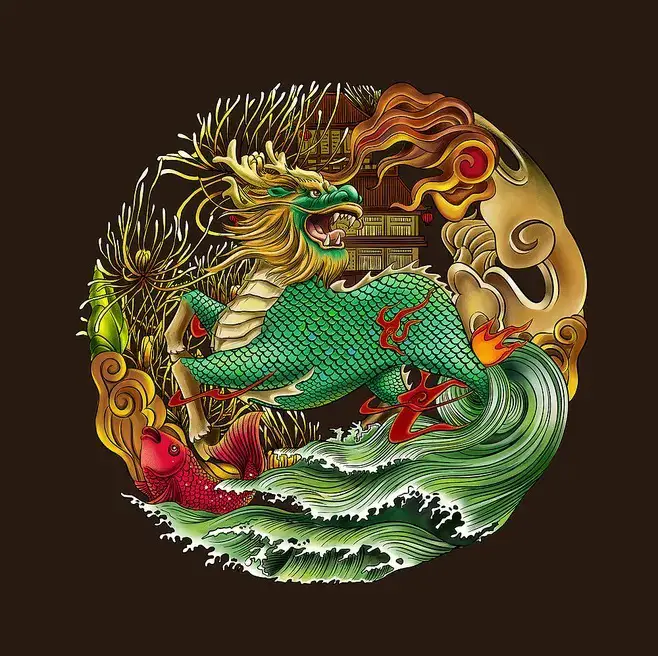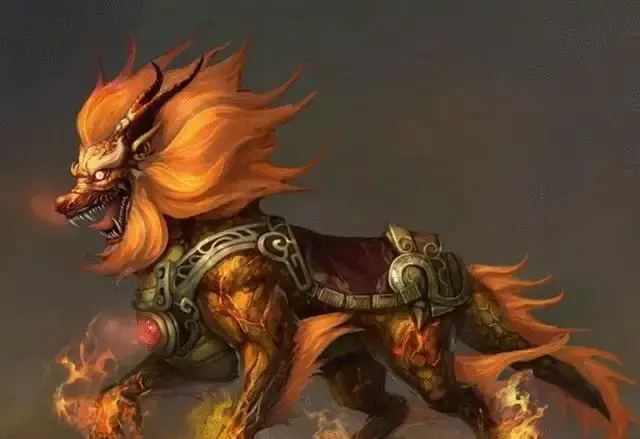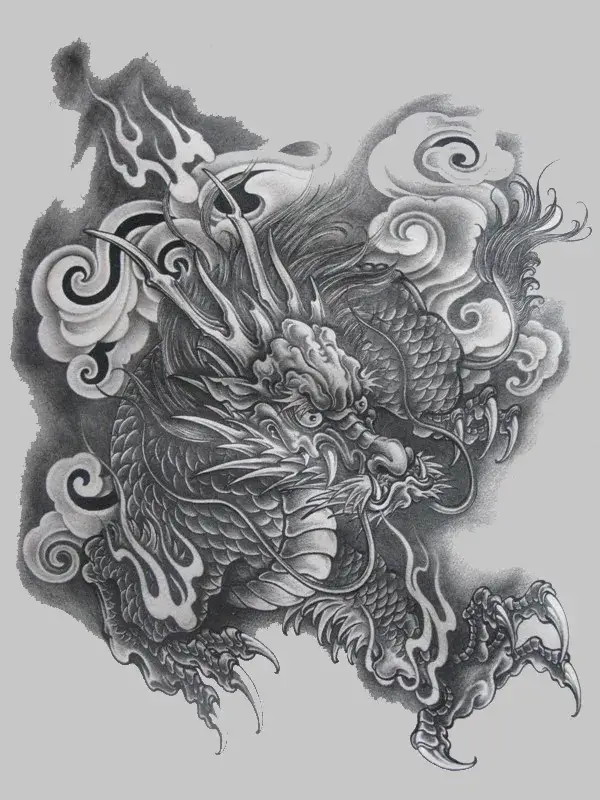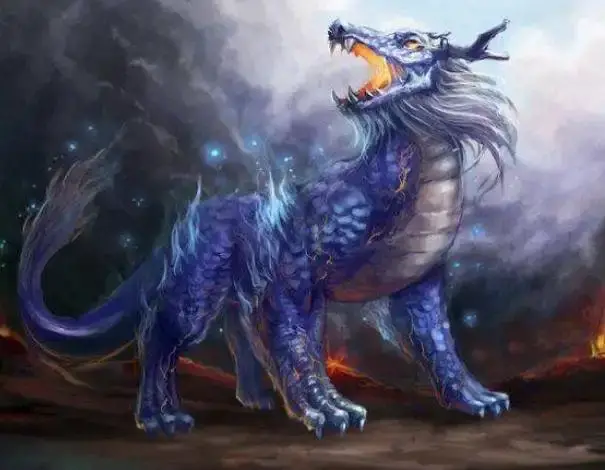The qilin is a Chinese unicorn in Chinese mythology. It is a symbol of prosperity and good luck. The qilin is symbolized by a hooved creature and it is believed to make an appearance during the imminent birth or death of a prominent ruler or sage. This symbol is precious to the Chinese and is a source of protection.
What is Kirin qilin?

The Kirin is the Korean version of qilin, and they denote the same mythical creature. This magical creature is viewed as holy and makes an appearance when a prominent ruler is about to be born or about to die. The creature is said to be deer-like, and is a member of the mythological Lin family with a single-horned beast in some dynasties. Other dynasties have modified their images to resemble a giraffe, horse, or oxen depending on the cultural differences.
The legendary creature was first mentioned in the 11 to 7 century BC in Chinese poetry. In the Warring state period of 475 to 221 BCE, the name qilin is further explained as ‘qi’ which means male, and ‘Lin’ which means female. The Ming dynasty associated the likeness of the creature with a giraffe. The qilin is believed to be herbivorous and can walk on grass without making any disturbances like the giraffe.
According to Taoist mythology, the qilin only punishes those who ate wicked. The qilin is also found in Japanese, Korean, and Vietnamese cultures. A qilin is justified and heroic. When a Kirin is aggravated, it covers itself in electricity. Little is known about their ecology due to their rare appearances.
What does a qilin look like?

The Chinese qilin has features of dragon-like antlers, thick lashes, manes, and a beard. The body is covered with scales either partially or fully. Unlike the dragons, qilin can come in various colors and can be bejeweled. Common Qilin colors include precious metals, gemstones, stars, modest tones, and brown tones. The appearances vary due to cultural differences in various dynasties. The Jin Dynasty depicted it as a beast wreathed in flames and smoke.
In the Ming Dynasty, the qilin is oxen with a dragon head with two horns and flamed ornaments. It is also associated with a giraffe, and this description traces its origin in the 15th century. With all the variations, it is agreeable that the qilin has hooves and has never been depicted with claws. The features of the dragon in all the cultures are also uniform and the presence of fish-like scales. The Chimera genotype is the genesis of all these variations. A chimera is a hybrid of more than two species. Typically, a qilin is scary to look at, but the fierce looks do not match its gentleness.
What does a qilin symbolize? (Qilin symbolism)

Qilin symbolizes good luck, good omen, success, protection, and longevity. The mythological creature also symbolizes fertility and the joy of bringing a new baby into the world. This creature is adored by the Chinese people and is holy and just only believed to punish the wicked. A qilin is gentle and kind, and this is symbolized by its refusal to walk on the grass to avoid hurting the grass blades. This is the reason why the unicorn walks on clouds and air.
In Feng Shui, the Chinese qilin is a symbol of longevity and represents famous children. It is also rare and is only seen when something significant as the birth of a sage is imminent. While it might seem fearsome and brave, the nature of the qilin is gentle and fair in the administration of justice. The benevolence of this creature makes it a precious legendary animal in Chinese culture. The protective nature of qilin makes the Chinese put a stature in their homes to wade off evil. The judging nature of this mythological creature depicts that it incinerated the wicked and the corrupt and would never cause any harm to the good people.
Is Kirin and Qilin the same? (Qilin vs. Kirin)
The two terms describe one creature that is hooved and chimerical. The Kirin spelling is found in Korean and Japanese cultures while the qilin is Chinese. They both appear as an announcement of the birth or death of a sage. The Kirin or qilin is prevalent in East Asia, but its origin is in ancient China. Some dynasties described it as a giraffe. So, why are they chimerical? This simply means that they come from a single cell with two or more distinguished genotypes.
This explains why some dynasties described it as dragon-like with giraffe characteristics while others depicted it as more deer-like. In modern times, the qilin is drawn or sculptured as a dragon with visible horse-like features. All these descriptions come from genetic chimerism. In all the folklores, the qilin or kilin chimera represents good luck, fertility, prosperity, and success.
Is Qilin Real?

No, the qilin is a mythological creature that finds its origin in the Chinese and East Asian Folklores. This legendary creature is part of the rich Chinese culture. It is a symbol of luck, success, and fertility. When something is symbolic, this means that an image is used to represent the hidden meaning. In the Chinese culture, the qilin denotes powerful and famous children like sages and rulers.
The qilin is one of the four legendary creatures or guardians in China. The other mythical creatures include Vermilion bird, white tiger, and Black tortoise or black warrior. Qilin is the least known among the four guardians due to its rare appearances. So, there are no existing qilin or Kirin in the world, and they are not real animals. There is no proof of their existence which is why they are mythological.
qilin vs unicorn

Qilin and unicorn are two mythical creatures that share many similarities in appearance. However, they originate from different cultures and have distinct characteristics.
Qilin is a creature from Chinese mythology that is often depicted as a hooved animal with a dragon-like head and scales covering its body. It is known for its gentleness, benevolence, and wisdom, and is considered to be a symbol of good fortune, longevity, and prosperity. Qilin is also believed to have supernatural abilities such as the power to detect evil and the ability to walk on water.
On the other hand, the unicorn is a mythical creature from European folklore that is typically depicted as a horse with a single horn on its forehead. It is often associated with purity, innocence, and grace, and is said to have the ability to purify water and heal the sick. The unicorn is also known for its elusive nature, as it is said to be difficult to catch or tame.
Despite their similarities in appearance, Qilin and unicorn have distinct cultural and symbolic meanings. While the Qilin is a symbol of good fortune and benevolence in Chinese culture, the unicorn is often associated with purity and innocence in European folklore. Additionally, the Qilin is typically depicted with scales, which are not present on the unicorn.
qilin vs dragon
Qilin (also spelled Kirin) and Dragon are both mythical creatures from Chinese mythology, but they are quite different in appearance and characteristics.
Qilin is often described as a unicorn-like creature, with a body of a deer or a horse, scales of a fish, and the antlers of a deer. It is believed to be a symbol of good luck, prosperity, and longevity, and is known for its gentle temperament and benevolent nature. Qilin is often associated with Confucianism and is considered a symbol of wisdom, justice, and compassion.
On the other hand, the dragon is a serpentine creature with four legs and large wings, often depicted as breathing fire or controlling the elements. The dragon is considered a symbol of power, strength, and good luck, and is often associated with the emperor and imperial power. Dragons are also believed to be guardians of treasures and are considered to have supernatural abilities.
In summary, while both creatures are considered to be powerful and auspicious in Chinese mythology, the Qilin is known for its gentle and benevolent nature, while the dragon is a symbol of power and authority.
Conclusion
The Chinese culture is rich and vast, with almost everything being symbolic. This shows how expressive the Chinese culture is, and it makes it unique and great. The qilin is a common sight in Chinese cities and homes as it is believed to wade off evil.